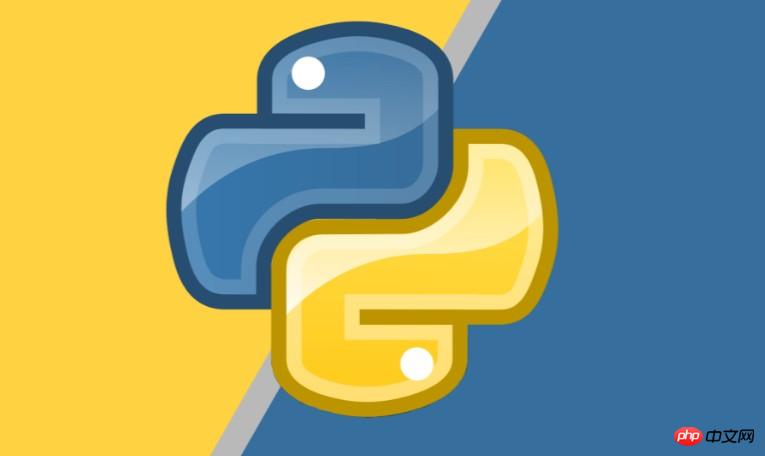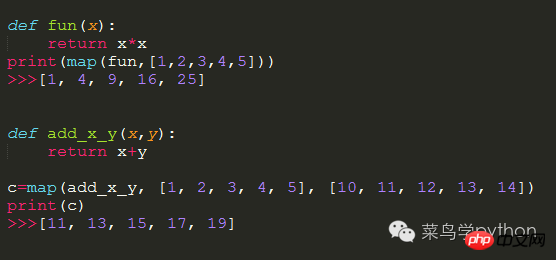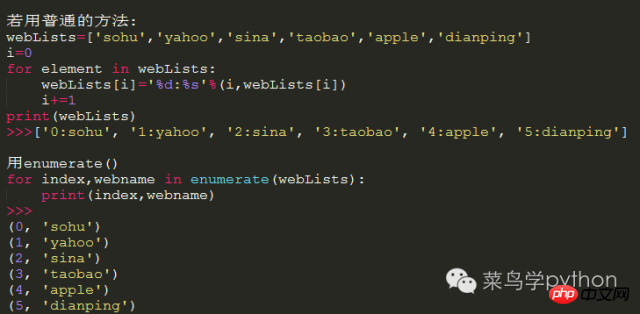Built-in functions that all Python masters know
Python has some very clever and powerful built-in functions, which are generally not used by beginners. I only discovered after using Python for a while, wow, there are such good functions. These functions are classic and After rigorous testing, it can save you a lot of things at once. The code is not only simpler and easier to read, but also you don’t have to build it behind closed doors. It not only makes it easier for you but also reduces bugs.

1.sorted()
1) Sorting a list
sorted([100, 98, 102, 1, 40]) >>>[1, 40, 98, 100, 102]
2) Through key parameters/functions
For example, there are many dictionary elements nested in a long list. We need to sort according to the length of each element
L = [{1:5,3:4},{1:3,6:3},{1:1,2:4,5:6},{1:9}]
new_line=sorted(L,key=lambda x:len(x))
print(new_line)
>>>[{1: 9}, {1: 5, 3: 4}, {1: 3, 6: 3}, {1: 1, 2: 4, 5: 6}]3) Sort the List composed of tuples
For example, the following is a list of the ages of students
students = [('wang', 'A', 15), ('li', 'B', 12), ('zhang', 'B', 10)]
print(sorted(students, key=lambda student : student[2]))
>>>[('zhang', 'B', 10), ('li', 'B', 12), ('wang', 'A', 15)]4) Use cmp function to sort
students = [('wang', 'A', 15), ('li', 'B', 12), ('zhang', 'B', 10)]
print(sorted(students, cmp=lambda x,y : cmp(x[0], y[0])) )
>>>[('li', 'B', 12), ('wang', 'A', 15), ('zhang', 'B', 10)]In fact, we need to talk about Python's sorting in detail. It requires a whole article to talk about its sorting algorithm. There is a lot of content. If you are interested, you can take a look at the source code to see how it is designed. I just click here first.
2.map()
map can map a specified sequence according to the provided function. It accepts a function f and a list, and applies the function f to each element of the list, and then returns a new list. The input parameters of the map function are also It can be multiple. Note that this function must have a return value (the value is important three times).
Otherwise, a new list will be returned, similar to [None, None, None, None, None, None, None, None, None]

The suitable scenario is that some elements in the list require repeated operations, which can be easily done with map.
3.enumerate()
In Python, iteration always takes out the element itself, not the index of the element. Sometimes we need to know the index of the element. For example, there are some website names in a long list. We hope that the index can also be listed when printing. . If there is no such function, we need to add a variable and increment the counting variable when printing in the loop. Now that we have enumerate, we don’t have to go to such trouble and we can do it directly.

4.zip()
The zip function accepts any number of sequences (including 0 and 1) as parameters and returns a tuple list
x = [1, 2, 3] y = [4, 5, 6] z = [7, 8, 9] xyz = zip(x, y, z) >>print xyz
This function is very convenient especially when building dictionary sequences (this trick is very clever, you can figure it out carefully)

5.filter()
The filter function accepts a function f and a list. The function of this function f is to judge each element and return True or False. This can filter out some elements that do not meet the conditions, and then return a list that meets the conditions.
def is_even(x): return x%2==0 print(filter(is_even,[1,2,3,4,5])) >>>[2, 4]
Especially when processing files, you need to remove some spaces, carriage returns and empty characters

6.reduce()
The usage of the reduce function is very similar to that of map. It is also a function f and a list, but the entry parameters of the function must be two. Reduce also calls each element repeatedly and finally returns the final value, while map returns a list

Note that reduce has been removed from the global function in python3. If you need to use it, you must from functools import reduce
The above is the detailed content of Built-in functions that all Python masters know. For more information, please follow other related articles on the PHP Chinese website!

Hot AI Tools

Undresser.AI Undress
AI-powered app for creating realistic nude photos

AI Clothes Remover
Online AI tool for removing clothes from photos.

Undress AI Tool
Undress images for free

Clothoff.io
AI clothes remover

Video Face Swap
Swap faces in any video effortlessly with our completely free AI face swap tool!

Hot Article

Hot Tools

Notepad++7.3.1
Easy-to-use and free code editor

SublimeText3 Chinese version
Chinese version, very easy to use

Zend Studio 13.0.1
Powerful PHP integrated development environment

Dreamweaver CS6
Visual web development tools

SublimeText3 Mac version
God-level code editing software (SublimeText3)

Hot Topics
 PHP and Python: Different Paradigms Explained
Apr 18, 2025 am 12:26 AM
PHP and Python: Different Paradigms Explained
Apr 18, 2025 am 12:26 AM
PHP is mainly procedural programming, but also supports object-oriented programming (OOP); Python supports a variety of paradigms, including OOP, functional and procedural programming. PHP is suitable for web development, and Python is suitable for a variety of applications such as data analysis and machine learning.
 Choosing Between PHP and Python: A Guide
Apr 18, 2025 am 12:24 AM
Choosing Between PHP and Python: A Guide
Apr 18, 2025 am 12:24 AM
PHP is suitable for web development and rapid prototyping, and Python is suitable for data science and machine learning. 1.PHP is used for dynamic web development, with simple syntax and suitable for rapid development. 2. Python has concise syntax, is suitable for multiple fields, and has a strong library ecosystem.
 PHP and Python: A Deep Dive into Their History
Apr 18, 2025 am 12:25 AM
PHP and Python: A Deep Dive into Their History
Apr 18, 2025 am 12:25 AM
PHP originated in 1994 and was developed by RasmusLerdorf. It was originally used to track website visitors and gradually evolved into a server-side scripting language and was widely used in web development. Python was developed by Guidovan Rossum in the late 1980s and was first released in 1991. It emphasizes code readability and simplicity, and is suitable for scientific computing, data analysis and other fields.
 Python vs. JavaScript: The Learning Curve and Ease of Use
Apr 16, 2025 am 12:12 AM
Python vs. JavaScript: The Learning Curve and Ease of Use
Apr 16, 2025 am 12:12 AM
Python is more suitable for beginners, with a smooth learning curve and concise syntax; JavaScript is suitable for front-end development, with a steep learning curve and flexible syntax. 1. Python syntax is intuitive and suitable for data science and back-end development. 2. JavaScript is flexible and widely used in front-end and server-side programming.
 How to run sublime code python
Apr 16, 2025 am 08:48 AM
How to run sublime code python
Apr 16, 2025 am 08:48 AM
To run Python code in Sublime Text, you need to install the Python plug-in first, then create a .py file and write the code, and finally press Ctrl B to run the code, and the output will be displayed in the console.
 Can vs code run in Windows 8
Apr 15, 2025 pm 07:24 PM
Can vs code run in Windows 8
Apr 15, 2025 pm 07:24 PM
VS Code can run on Windows 8, but the experience may not be great. First make sure the system has been updated to the latest patch, then download the VS Code installation package that matches the system architecture and install it as prompted. After installation, be aware that some extensions may be incompatible with Windows 8 and need to look for alternative extensions or use newer Windows systems in a virtual machine. Install the necessary extensions to check whether they work properly. Although VS Code is feasible on Windows 8, it is recommended to upgrade to a newer Windows system for a better development experience and security.
 Can visual studio code be used in python
Apr 15, 2025 pm 08:18 PM
Can visual studio code be used in python
Apr 15, 2025 pm 08:18 PM
VS Code can be used to write Python and provides many features that make it an ideal tool for developing Python applications. It allows users to: install Python extensions to get functions such as code completion, syntax highlighting, and debugging. Use the debugger to track code step by step, find and fix errors. Integrate Git for version control. Use code formatting tools to maintain code consistency. Use the Linting tool to spot potential problems ahead of time.
 Where to write code in vscode
Apr 15, 2025 pm 09:54 PM
Where to write code in vscode
Apr 15, 2025 pm 09:54 PM
Writing code in Visual Studio Code (VSCode) is simple and easy to use. Just install VSCode, create a project, select a language, create a file, write code, save and run it. The advantages of VSCode include cross-platform, free and open source, powerful features, rich extensions, and lightweight and fast.






